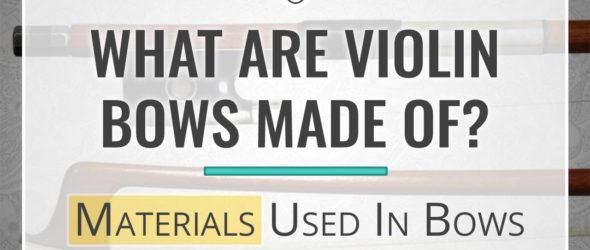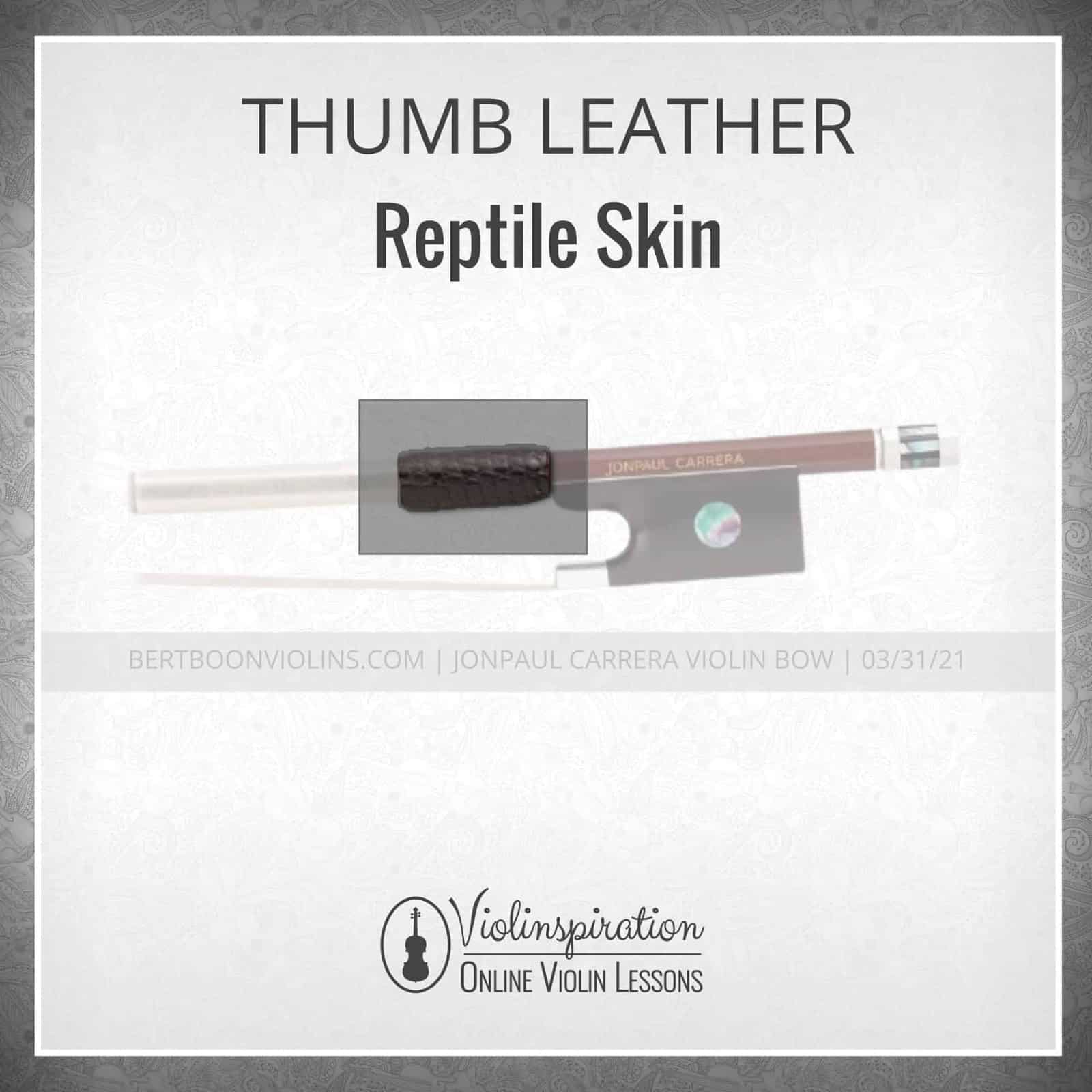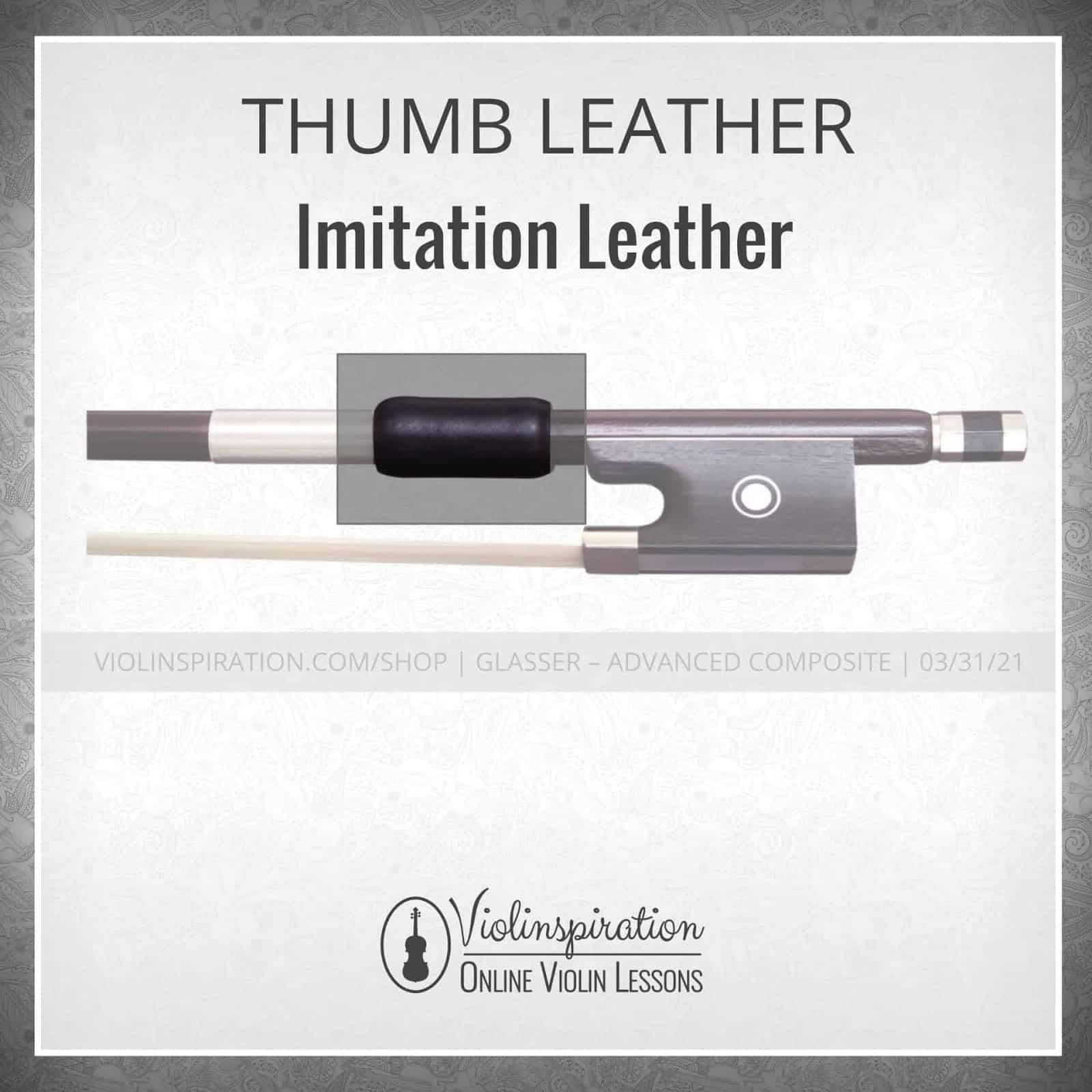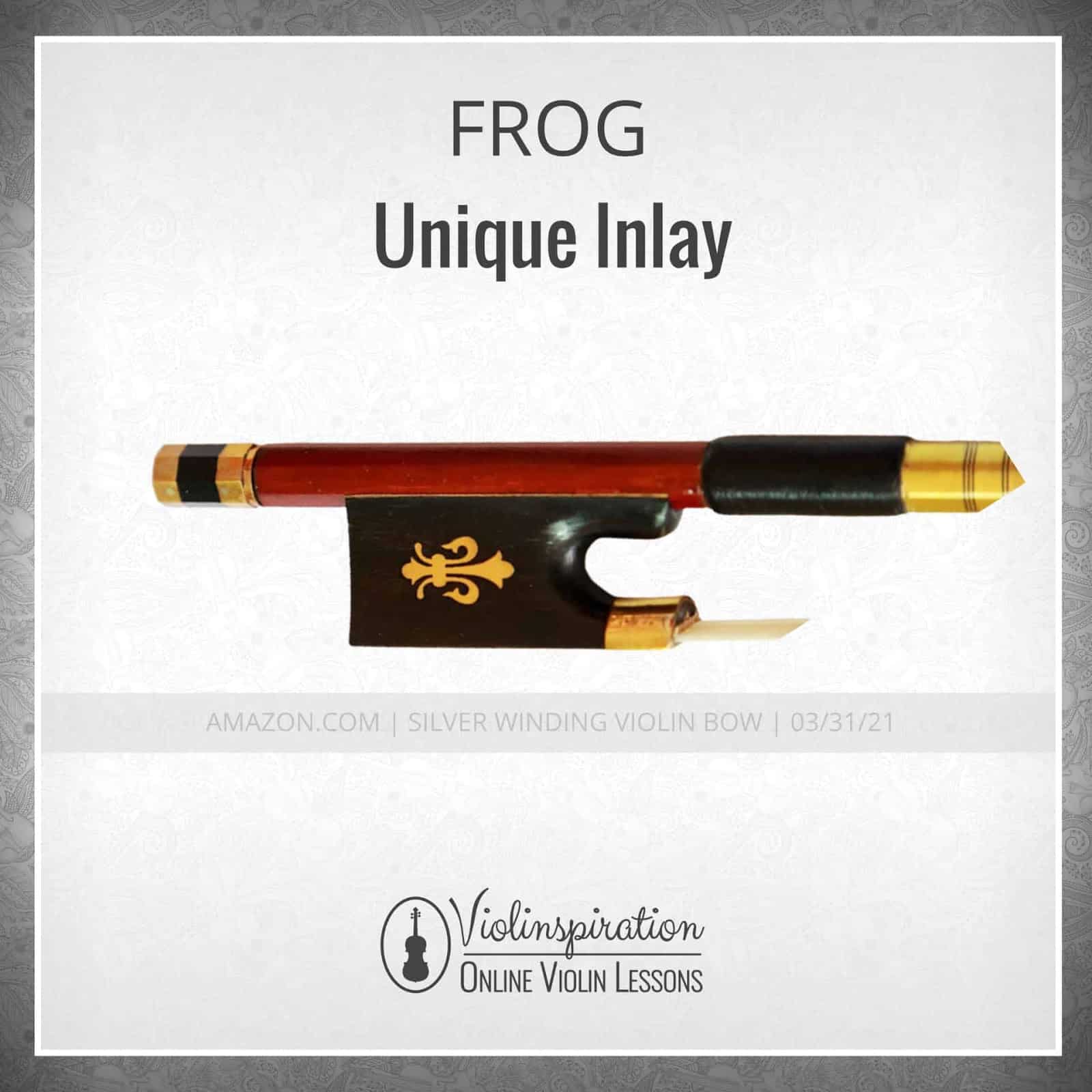Ever wonder what violin bows are made of? Over time, the composition of a bow has changed from wood and horsehair to synthetic materials.
Each violin bow is made up of an individual blend of animal, synthetic and plant derived materials.
Find out more about the materials violin bows are made from in this blog post!
Violin Bow Parts
The violin is made out of different parts, and each part is made from a different type of material. Before I go into the materials used for each part, I quickly want to remind you of the most important parts of the violin bow.
As you can see, the most important parts of the violin bow are:
- Bow stick
- Bow hair
- Frog
- Thumb Leather
- Winding
- Ferrule
- Eye
- Screw
- Tip
- Tip Plate
I will cover the violin bow materials of each of these parts in this article.
You can even skip directly to the part of the bow you are most interested in with the clickable links in the table of contents!
What Materials Are Violin Bows Made of?
Materials used for the Tip Plate of the Violin Bow
The two materials used for the tip of the violin bow are ivory and synthetic materials.
A synthetic tip is probably the best option for most violinists.
The first reason is that ivory gets harvested from hunting elephants. Ivory on violin bows is merely used for decorative purposes, which is not worth the suffering of elephants for the benefit of violinists.
The other reason to avoid ivory is getting into trouble at customs. As the population of African elephants has drastically reduced by poachers hunting for ivory, the import of ivory got banned in many countries. It means that if you want to travel with your violin, you might get into trouble at customs if you own a bow with an ivory tip. Without the proper certificates and proof you might risk having to leave your violin bow behind in a country you travelled to.
Materials Used for the Thumb Leather
Thumb leather is made from either synthetic materials, leather or reptile skin.
Reptile skin is obtained from living animals that are sliced open and skinned. As the animals in this practice are usually left to bleed to death, this is the least animal friendly type of leather.
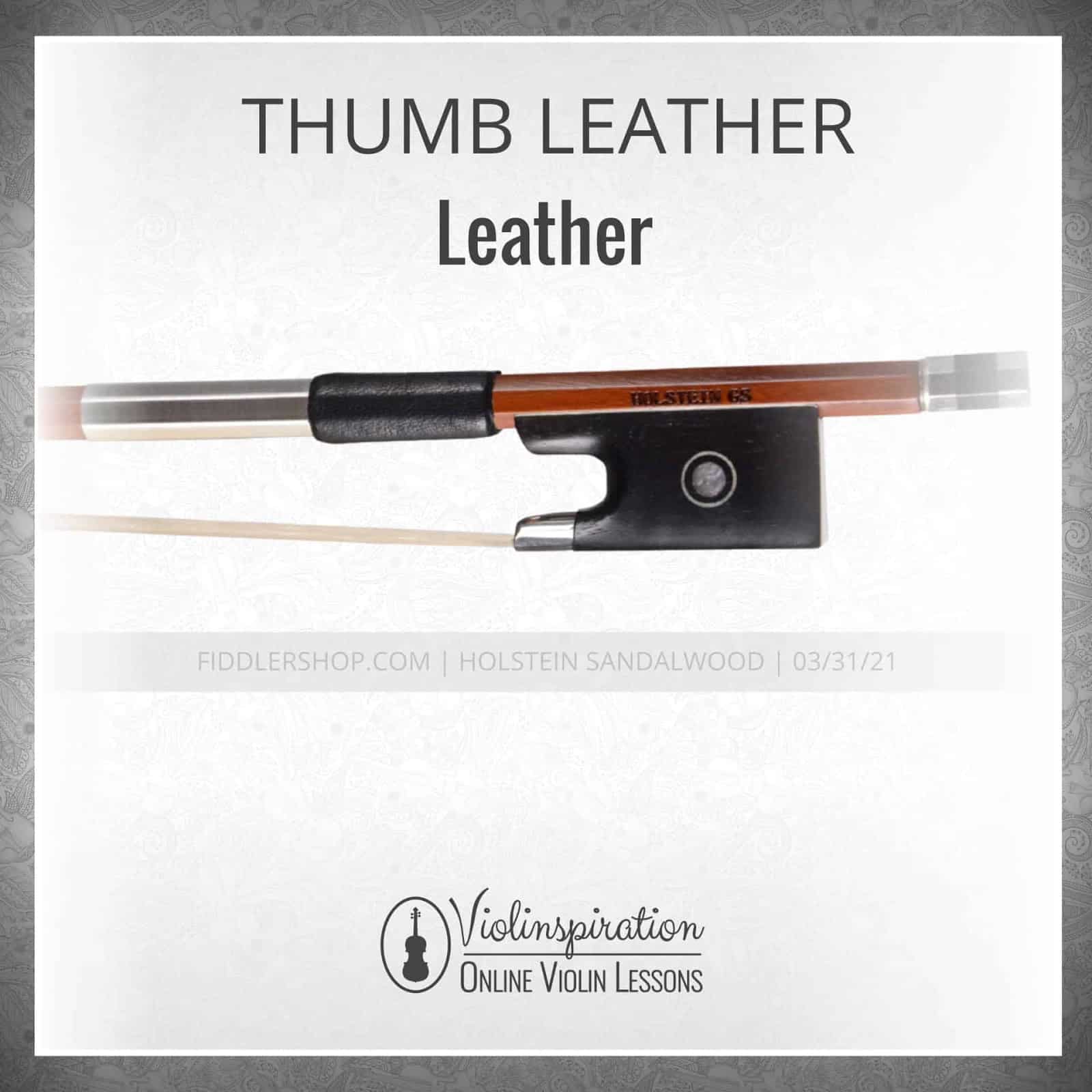
The thumb leather can also be made from leather of other types of animals, like goats or cows.
An animal-friendly alternative to leather bow wraps are synthetic bow wraps. Bow wraps of artificial leather are nowadays widely available.
Materials Used for the Frog
The frog of the violin bow can be made from many different materials, such as ivory, horn, tortoise shell and even gold! As long as the height and weight of the bow are balanced, violin builders can be creative and vary the material and even shape of the frog.
However, the wooden part of the frog is almost always made from ebony. This is because it is a very strong, durable wood that is very suitable for making a frog.
Materials Used for the Frog Eye
The frog eye is a purely decorative feature – an excellent chance for a bow maker to get creative!
In most violin bows a mother of pearl eye harvested from shells of oysters and abalones gets added as a decorative feature.
On many violin bows there is a frog ring around the pearl. This can be made from various kinds of metal. The frog ring around the pearl is also called a “Parisian eye”. In some cases the material also gets featured in the slide of the frog (where the frog connects with the wood), for a shimmering effect.
Next to the mother of pearl eyes, violin builders can also add alternative features to the frog, such as unique inlays or hand-painted motives on the frog.
Materials Used for Ferrule, Screw and Winding
The ferrule, screw and winding of the bow are made from various kinds of metal.
Affordable violin bows are usually made with a nickel ferrule and screw.
More expensive bows are made with silver and in some cases even gold!
Occasionally alternative materials are used for the winding, such as artificial fish bone. That makes for an interesting color effect on the winding.
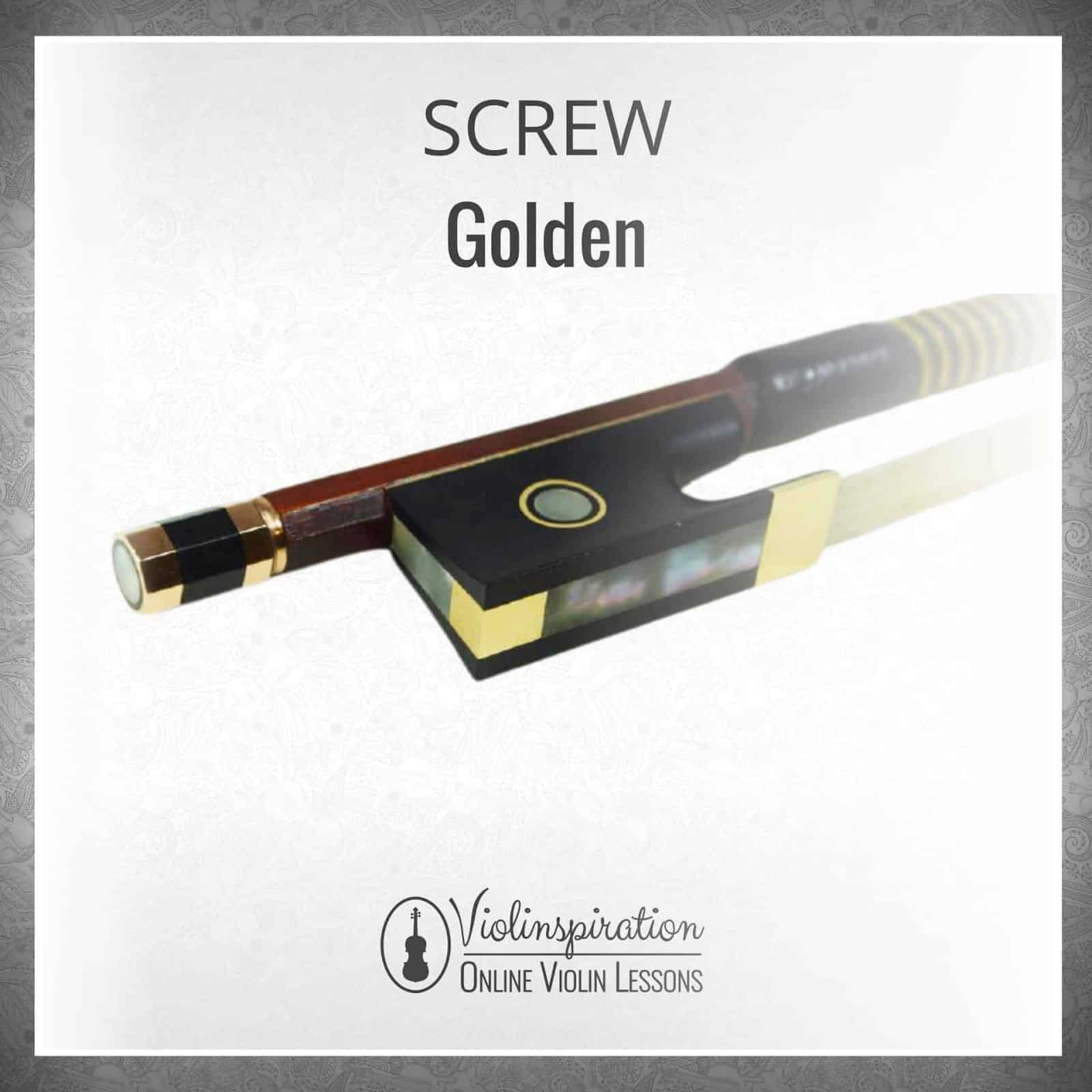
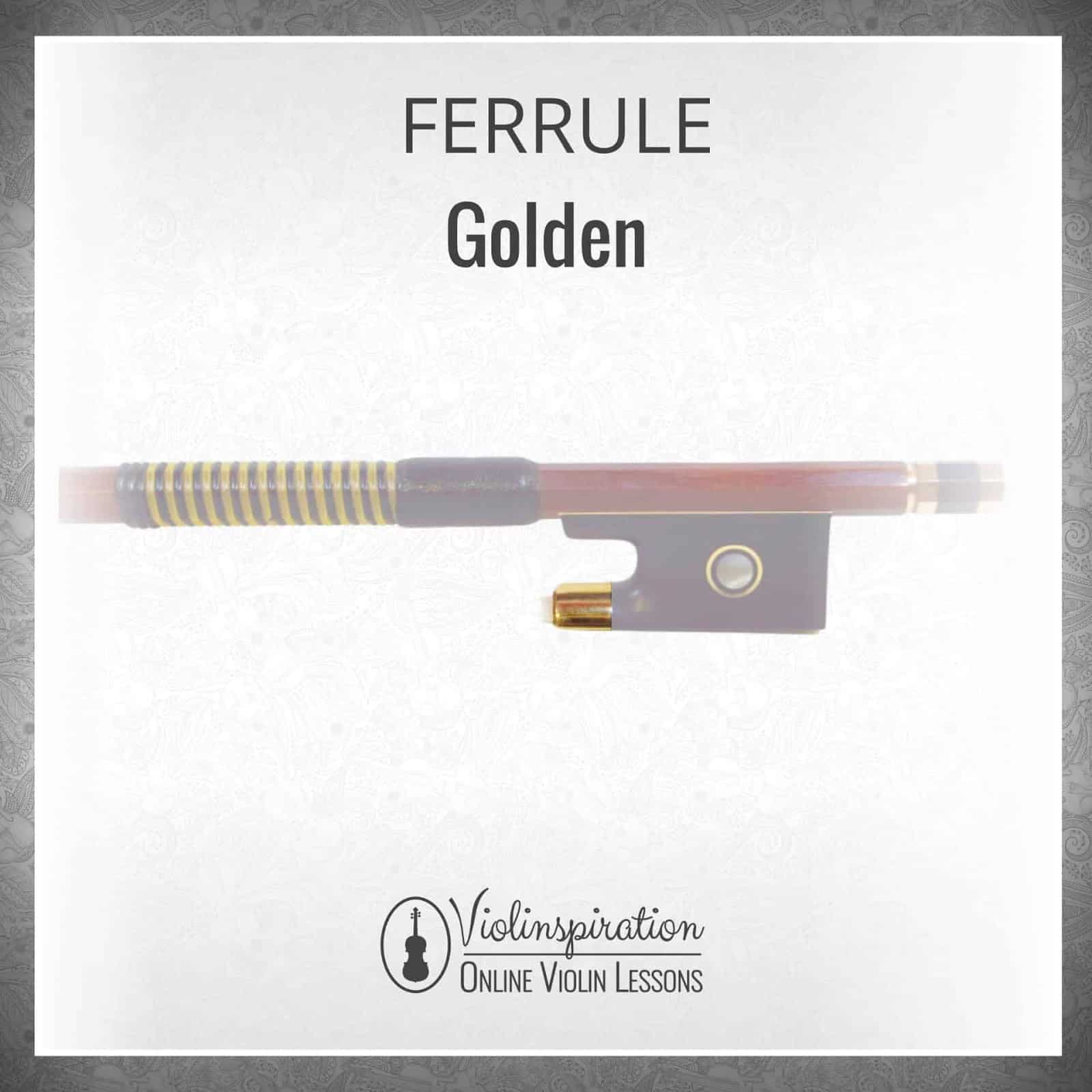
Materials Used for the Glue of the Violin Bow
Many violinists are not aware that the violin makers are also using an adhesive. It is called hide glue and it is used to attach the horsehair onto the shaft of the bow. Hide glue is a natural product made from animal hides, usually pigskin or cattlehide.
It is created by boiling animal skin and bones together in water until it thickens and becomes gelatinous. This substance can then be applied to the bow without spoiling or losing its adhesive qualities over time, as long as it does not come into contact with water. Hide glues allow for elasticity that expands and contracts with the wood of the instrument.
Nowadays, alternative glues are available that do not use any animal materials.
But despite the introduction of these modern glues to the market more than a half-century ago, they are still not commonly used. The reason for this is that synthetic glues are hard to remove from a bow when changing bow hairs. That is why hide glues still remain the preferred adhesive by violin makers.
Bow Stick and Violin Bow Tip Materials
The two materials used in the fabrication of the violin bow stick are wood and composite materials. Composite materials are a combination of different materials, such as fibreglass or carbon fiber.
Wooden bows are made from an array of exotic woods from Pernambuco to Snakewood! Bows made from alternative kinds of wood and hybrid bows can also be found for those who want something different than the norm.
About 30% of the tone quality produced by a violin is determined by the quality of the violin bow stick.
In case you are on the lookout to purchase a bow yourself, I created a separate blog post in which I discuss all the pros and cons of every violin bow material. That way it will be much easier for you to decide what type of bow is best for you.
Violin Bows Made Out of Composite Materials
Fiberglass Violin Bows
Fiberglass is a material made from the combination of plastic and glass fibers. Often these types of bows are hollow on the inside.
If you ever got an inexpensive violin bundle, in which the bow was included, it is most likely a fiberglass one!
Carbon Fiber Violin Bows
Using carbon fiber as a material to create violin bows is a great alternative to the traditional wood.
Carbon fiber is made from a mixture of fibers that together provide durability and elasticity. This type of bow will be a more affordable alternative to handmade wooden bows, without compromising quality.
Because the creation process of carbon fiber bows is simpler and more affordable than creating handmade wooden bows, the price to quality ratio of carbon fiber bows is usually very good. Another benefit of carbon fiber bows is that they are very strong and durable, making them excellent for younger students.
That is also why carbon fiber bows are quickly gaining popularity among both amateur and professional violinists.
Violin Bows Made Out of Wood
Pernambuco Violin Bows
Pernambuco violin bow material is considered one of the best materials for making a high quality violin bow. Pernambuco wood is used because it has a strong grain with less tendency to warp or twist than other woods. The heartwood in these trees contains tannin which gives them their distinctive red color and also makes them resistant to insect attack. Pernambuco violin bows are known for their warm, rich sound.
Unfortunately, it’s now time for us violinists to consider other options.
It has been difficult, in recent years, to find pernambuco for bow making due to deforestation in Brazil which is where this wood comes from. Pernambuco is now officially an endangered tree. That is why many violin makers are now on the lookout for new, alternative materials to make violin bows.
Alternative Wooden Violin Bows
Violin bows come in a variety of types, shapes and materials. Snakewood, Brazilian wood and other woods are now commonly used woods for violin bows. A snakewood bow is generally considered an excellent choice for baroque performers due to its ability to produce a soft and subtle sound.
Brazilwood, which stands for a wide range of tropical woods, is also a popular choice as it is a very strong type of wood that can produce a clear and warm sound.
However, there are many other types of wood used to make violin bows! Violin makers and players all over the world prefer one type over another due to personal preference or availability of certain woods.
Hybrid Violin Bows
Hybrid violin bows are still fairly new to the market. Composed of carbon fiber and wood, these types of bows are created to give violinists the best of both worlds: the affordable, perfectly balanced and flexible carbon fiber bow, mixed with the warm sound of a wooden bow.
Violin Bowhair Materials
Bow hairs can be bought separately from a violin bow. They are glued together at the tip and are sold in tassels of hairs to apply it to the violin bow. These bundles are also called a hank of bow hair.
A single violin bow will use between 150 and 180 individual strands, each one meticulously attached to the next to create a perfectly balanced bow.
There are two types of materials used for violin bow hair: synthetic hair and horse hair.
Horse hair is by far the most common material that we use to make bows, but some violinists prefer to use synthetic vegan bow hair for ethical reasons.
Here you can see a video that shows how the hair of the bow gets attached to the bow stick.
Bow Hair Made from Horses
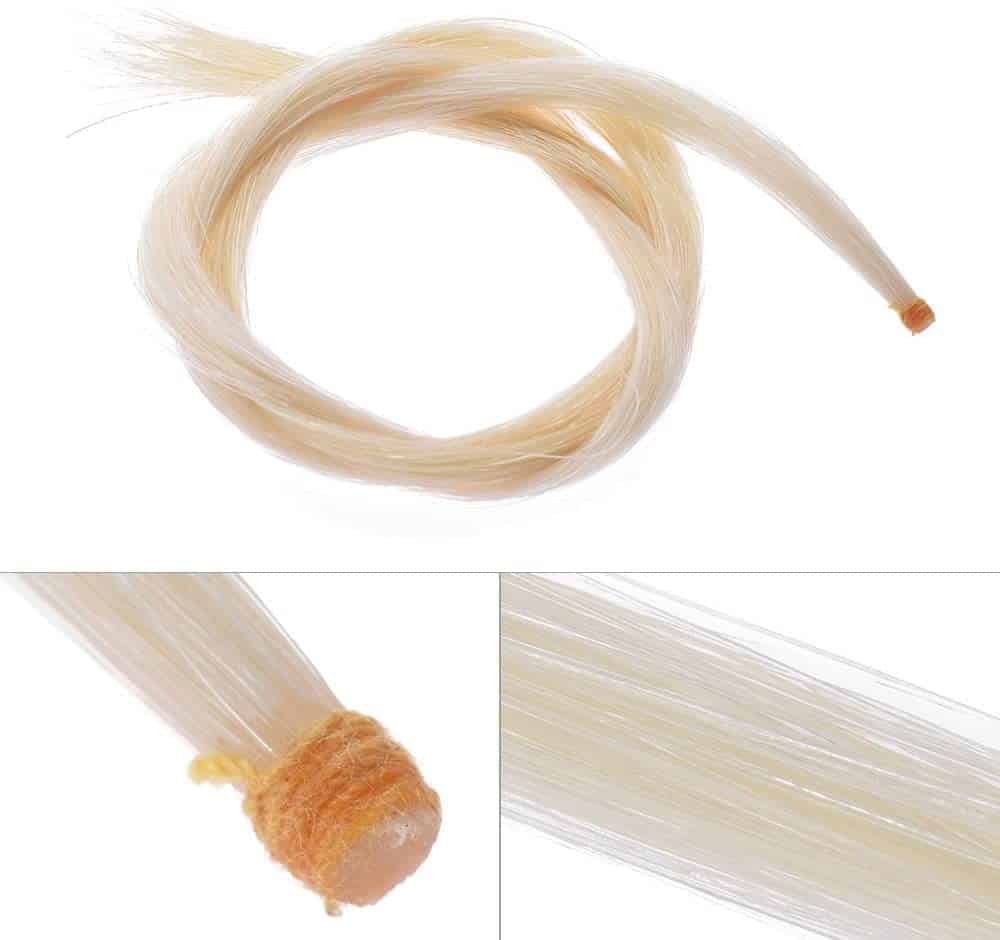
Bow hair is harvested from horses, often from cold climates like Mongolia. As these horses are slaughtered for their meat, the leftover tail hairs are collected by violin makers to make bows.
Unusually thick or kinked ones are painstakingly removed so that only straight-haired bows survive the cut-throat competition.
Horse hair is widely available and violin makers all over the world have experience rehairing with this type of bow hair.
Synthetic Bow Hair
Synthetic bow hair is made from carbon fiber. Synthetic hair is a great option for ethical vegans or others who do not want to support the horse meat industry. It can easily deal with any weather conditions – great for playing outside or when you live in an area with very humid or dry air.
The makers of synthetic bow hair also claim it is up to three times more durable than horse hair.
Best Bow Hair for A Violin Bow
Who knew that the type of hair on a bow has nothing to do with its value or quality? People often think that the quality of a bow is determined by its hair, but in reality it’s all about the shape and materials of the stick.
There are different types of bow hair, and you should change it every so often anyway.
Out of all elements of the violin bow, the only element that truly makes a big difference for the tone of the violin is the violin bow stick. So feel free to try different types of hair on your bow, to find out what suits you best!
Conclusion
There are many different materials used for making violin bows. Traditionally, all natural materials were used, ranging from reptile skins to ivory and tropical wood. However, in the modern world more and more violinists are growing concerned about animal welfare and environmental preservation. That is why more and more alternative materials are emerging to the market, ranging from sustainably harvested wood, carbon fiber bows, and artificial leather. With this article you now have an idea of the different features of the violin bow and what types of materials they are created from.
